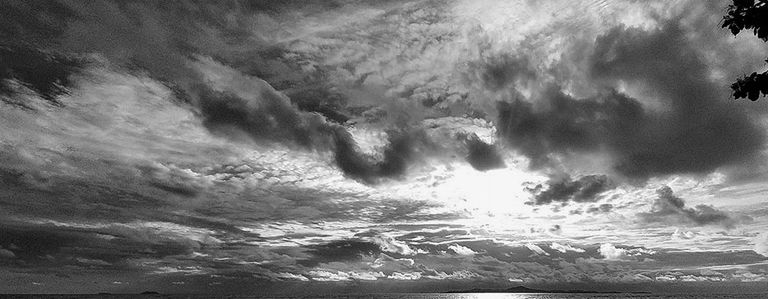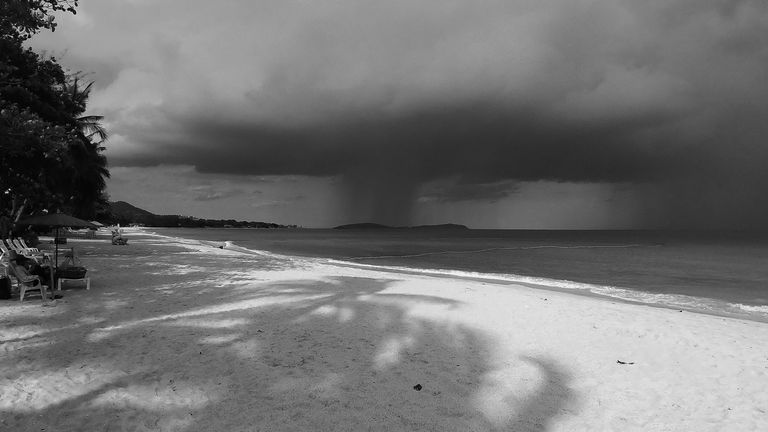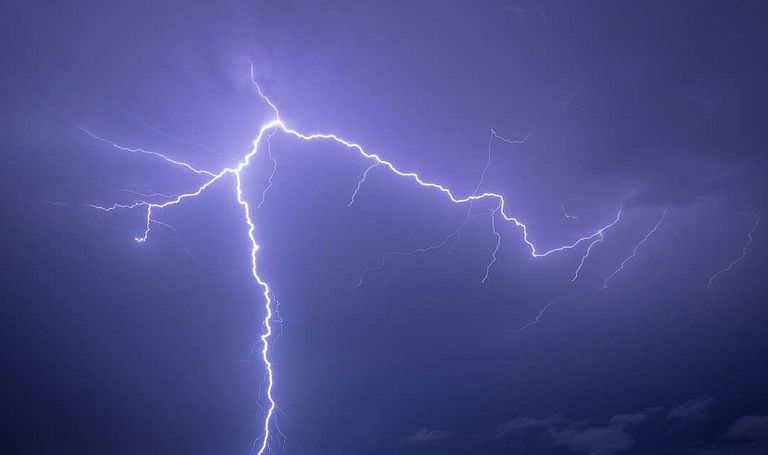Storm clouds, those billowing, shadowy behemoths, embody a fascinating duality—combining the sublime beauty of nature with the dark promise of destruction. They are majestic and terrifying, heralds of nature’s most powerful forces, suspended in the skies. To witness the slow approach of a storm cloud is to feel both awe and unease; the grandeur of its towering presence captivates, while its potential for devastation lingers in the mind.



Storm clouds arise from specific meteorological processes, their formation dictated by the meeting of atmospheric forces. It starts with something as simple as warm air rising from the ground. As the sun heats the Earth's surface, warm, moist air is lifted into the atmosphere, encountering cooler air at higher altitudes. When these rising currents of warm, moist air meet cooler air in the upper atmosphere, the water vapor in the air condenses into tiny droplets, forming clouds. But storm clouds, especially the colossal cumulonimbus clouds, require more than just this basic interaction of air and water.



A significant shift in atmospheric stability sets the stage for a storm. These clouds typically form when there is instability in the atmosphere, often caused by differences in temperature between air masses. As warm air rushes upwards, cold air races downwards, creating powerful updrafts and downdrafts. Within the storm cloud, these turbulent winds continue to churn, causing the cloud to grow taller and more ominous. Some cumulonimbus clouds reach heights of up to 12 kilometers (40,000 feet) or more, towering like castles in the sky, filled with the electrical energy of an impending storm.



As they build, storm clouds take on a distinctive appearance—dense, dark, and brooding. The bottom of the cloud often appears flat, while the upper regions billow outwards in an anvil shape, as if the heavens themselves are preparing for battle. This moment, just before the storm breaks, is both breathtaking and terrifying. The cloud's darkness is due to the thickness of the water droplets and ice particles within it; sunlight can no longer penetrate these layers, and what was once a bright, white cloud becomes a dark harbinger of rain, wind, and lightning.



Herein lies the strange beauty of storm clouds—the intricate layers of vapor that reflect and refract light, the sharp contrasts of gray and black, the flashes of lightning dancing within them. The ethereal interplay of light and shadow on the cloud’s surface creates a visual spectacle, even as it signals the violence of what’s to come. Just before a storm, the air takes on a certain stillness, and the world below seems to brace for impact. The distant rumble of thunder acts as both a warning and an invitation to pause and reflect on the raw power of nature.



Storm clouds are capable of creating the most destructive weather phenomena: thunderstorms, hail, tornadoes, and even hurricanes. Each of these events starts with the churning chaos inside these massive clouds. The energy built up through updrafts and downdrafts can result in lightning, a discharge of electrical energy powerful enough to split trees and ignite fires. In extreme cases, tornadoes—whirling columns of air—descend from the heart of the storm, unleashing havoc on anything in their path. Yet, within this horror lies the delicate balance that makes nature so captivating. Even the most terrifying elements—lightning, torrential rain, or gale-force winds—are temporary, eventually giving way to the calming aftermath, where the sun once again pierces the sky, scattering light through droplets of rain, forming rainbows.



Perhaps what is most compelling about storm clouds is the way they seem to mirror the human experience of emotion. Much like our feelings, which can shift from light to dark in an instant, these clouds are ever-changing, forming and reforming as they traverse the sky. Just as we are capable of moments of overwhelming intensity—anger, fear, joy—storm clouds encapsulate these same dynamics, playing out on a grand, natural scale. Watching a storm cloud gather strength, you can’t help but sense a connection to the passion, the fury, and the serenity that reside within us all.



In the end, storm clouds are a perfect symbol of nature's complexity, where beauty and terror are not mutually exclusive. They are an awe-inspiring reminder that the forces shaping our world are far greater than anything we can control, yet they offer us fleeting moments of unparalleled beauty. It is in this balance—between horror and beauty, chaos and calm—that storm clouds find their place as one of nature’s most fascinating phenomena.



